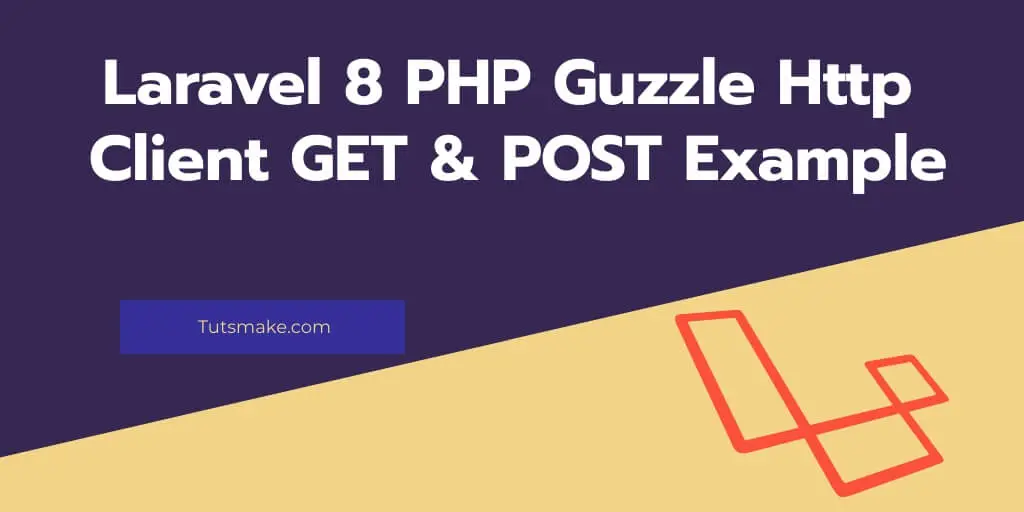Guzzle get post request laravel 8; In this tutorial you will find complete guide on How to use Guzzle HTTP Client GET and POST requests in PHP Laravel 8.
POST requests in Guzzle are sent with an application/x-www-form-urlencoded Content-Type header if POST fields are present but no files are being sent in the POST. If files are specified in the POST request, then the Content-Type header will become multipart/form-data.
Sometimes, you need to call external or internal APIs in your laravel 8 apps. At that time you can use HTTP guzzle client request in laravel 8. which makes it easy to call external APIs in laravel 8 with get and post request.
So, in this guzzle http GET and POST request laravel 8 tutorial will help to how to use http guzzle http client package for calling external or internal apis in your laravel 8 apps.
Guzzle Http Client GET and POST Requests In Laravel 8
- Step 1: Install Laravel 8 App
- Step 2: Database Configuration
- Step 3: Install guzzlehttp/guzzle Package
- Step 4: Make Routes
- Step 5: Create Controllers By Artisan
- Step 6: Run Development Server
Step 1: Install Laravel 8 App
First of all, Open your terminal and run the following command to download or install laravel fresh new setup:
composer create-project --prefer-dist laravel/laravel blog
Step 2: Database Configuration
After that, open “.env” file and update the database name, username, and password in the env file:
DB_CONNECTION=mysql DB_HOST=127.0.0.1 DB_PORT=3306 DB_DATABASE=Enter_Your_Database_Name DB_USERNAME=Enter_Your_Database_Username DB_PASSWORD=Enter_Your_Database_Password
Step 3: Install guzzlehttp/guzzle Package
In this step, Install guzzlehttp/guzzle via composer package. So open your terminal and run the following command:
composer require guzzlehttp/guzzle
Step 4: Make Routes
Next step, Navigate to “routes/web.php” file and add the following routes into your web.php file:
use App\Http\Controllers\PostGuzzleController;
Route::get('posts',[PostGuzzleController::class,'index']);
Route::get('posts/store', [PostGuzzleController::class, 'store' ]);
Step 5: Create Controllers by Artisan
Next step, open your terminal and run the following commands:
php artisan make:controller PostGuzzleController
This command will create PostGuzzleController by the artisan command.
After that, Navigate to app/http/controller and open PostGuzzleController.php.Then update the following methods into your controller file:
<?php
namespace App\Http\Controllers;
use Illuminate\Http\Request;
use Illuminate\Support\Facades\Http;
class PostGuzzleController extends Controller
{
public function index()
{
$response = Http::get('http://jsonplaceholder.typicode.com/posts');
$jsonData = $response->json();
dd($jsonData);
}
public function store()
{
$response = Http::post('http://jsonplaceholder.typicode.com/posts', [
'title' => 'This is test from tutsmake.com',
'body' => 'This is test from tutsmake.com as body',
]);
dd($response->successful());
}
}
Step 6: Run Development Server
In this step, use the following php artisan serve command to start your server locally:
php artisan serve
After that, call the above method with parameters on postman by using the following urls:
http://127.0.0.1:8000/posts http://127.0.0.1:8000/posts/store
Conclusion
Laravel 8 http guzzle client request tutorial, you have learned how to use guzzle HTTP client requests in laravel 8 apps by using laravel guzzle package.
